
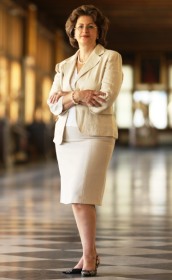 Cristina Acidini was born in Florence, she graduated in the History of Art from Florence in 1977. She held a scholarship from the Fondazione di Studi di Storia dell’arte Roberto Longhi and was Visiting Professor at the SUNY at Plattsburg, New York. Since 1981, she has been a history of art official at the Ministry for Cultural Affairs. From 2000 to 2008, she was Soprintendente of the Opificio delle Pietre Dure and since 2006 has been Soprintendente for the Historic, Artistic and Ethno-anthropological Heritage and for the Museums Group of the City of Florence, with general responsibility for museums such as the Uffizi, Accademia, Bargello, Pitti etc, and for the protection of all of Florence’s artistic treasures. From December 2010 to March 2012, she was also pro temp Soprintendente for the Opificio delle pietre dure in Florence. In 1997, as Eisenhower Fellow, she undertook a voyage through 14 states in the USA to explore aspects associated with the operation of art museums. She drew from this experience to write more extensively on the subject in a book; Il Museo d’arte americano: dietro le quinte di un mito, Milano, Electa 1999. During her 30 years of career, she has directed restorations, taken part in the organisation of exhibitions in Italy and abroad, from the first exhibition of early Florentine art in Beijing and Shanghai in China in 1997, as well in Moscow, Budapest and many American towns. She has taken part in international conferences and congresses, collaborated with European groups and projects. She has produced publications, mainly in the history of art but also on the administration of museums and questions of restoration, some of which have received awards. She has written on Benozzo Gozzoli, Pintoricchio, Sandro Botticelli, Giorgio Vasari, the Zuccari brothers, Michelangelo as sculptor and painter, and also on Lorenzo il Magnifico, Santa Maria del Fiore, the Cenacoli of Florence, houses and gardens, the myth of Europa. Among her associate posts are at the Accademia delle Arti del Disegno of Florence, the Eisenhower Fellowship in Philadelphia, member of the board of the Fondazione Roberto Longhi in Florence. She is the coordinator of the “City of Restoration” project on mandate from the Comune di Firenze via the Fondazione “Firenze 2010”. She is a consultant to the Council of Europe for exhibitions.
Cristina Acidini was born in Florence, she graduated in the History of Art from Florence in 1977. She held a scholarship from the Fondazione di Studi di Storia dell’arte Roberto Longhi and was Visiting Professor at the SUNY at Plattsburg, New York. Since 1981, she has been a history of art official at the Ministry for Cultural Affairs. From 2000 to 2008, she was Soprintendente of the Opificio delle Pietre Dure and since 2006 has been Soprintendente for the Historic, Artistic and Ethno-anthropological Heritage and for the Museums Group of the City of Florence, with general responsibility for museums such as the Uffizi, Accademia, Bargello, Pitti etc, and for the protection of all of Florence’s artistic treasures. From December 2010 to March 2012, she was also pro temp Soprintendente for the Opificio delle pietre dure in Florence. In 1997, as Eisenhower Fellow, she undertook a voyage through 14 states in the USA to explore aspects associated with the operation of art museums. She drew from this experience to write more extensively on the subject in a book; Il Museo d’arte americano: dietro le quinte di un mito, Milano, Electa 1999. During her 30 years of career, she has directed restorations, taken part in the organisation of exhibitions in Italy and abroad, from the first exhibition of early Florentine art in Beijing and Shanghai in China in 1997, as well in Moscow, Budapest and many American towns. She has taken part in international conferences and congresses, collaborated with European groups and projects. She has produced publications, mainly in the history of art but also on the administration of museums and questions of restoration, some of which have received awards. She has written on Benozzo Gozzoli, Pintoricchio, Sandro Botticelli, Giorgio Vasari, the Zuccari brothers, Michelangelo as sculptor and painter, and also on Lorenzo il Magnifico, Santa Maria del Fiore, the Cenacoli of Florence, houses and gardens, the myth of Europa. Among her associate posts are at the Accademia delle Arti del Disegno of Florence, the Eisenhower Fellowship in Philadelphia, member of the board of the Fondazione Roberto Longhi in Florence. She is the coordinator of the “City of Restoration” project on mandate from the Comune di Firenze via the Fondazione “Firenze 2010”. She is a consultant to the Council of Europe for exhibitions.
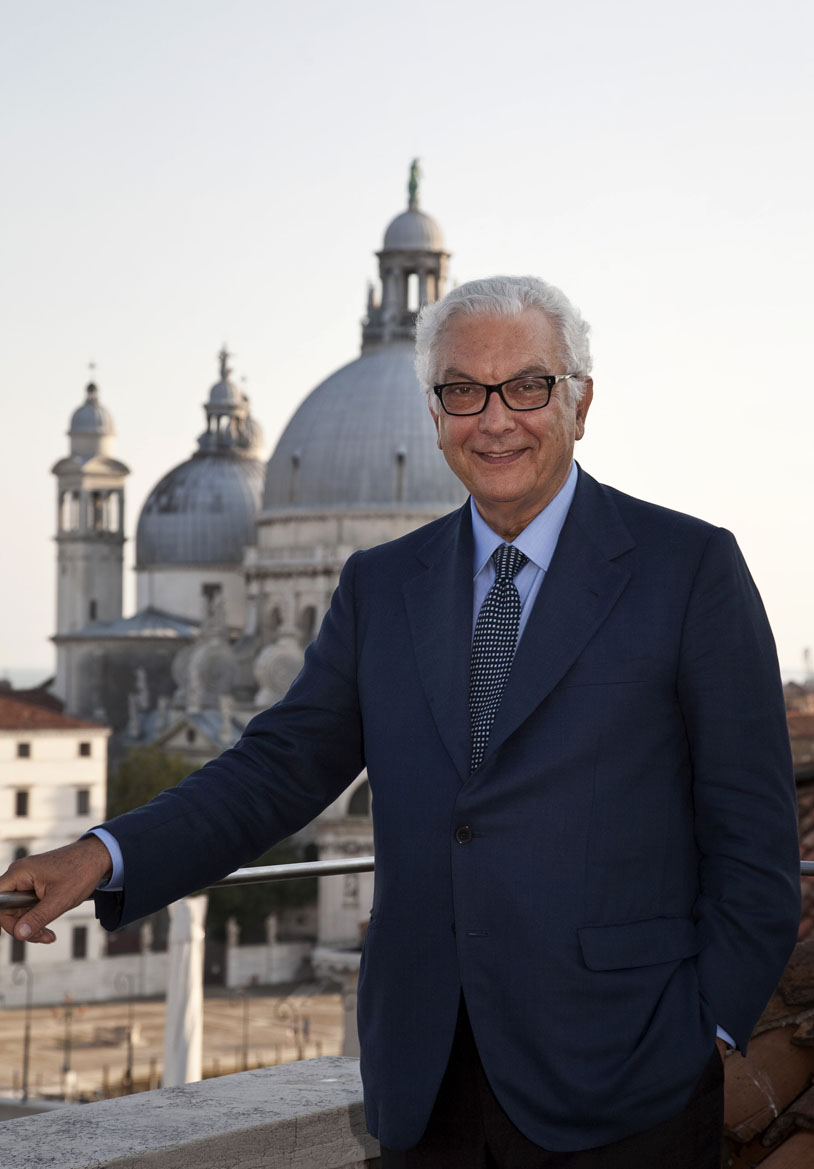 Paolo Baratta was born in Milan in 1939 and lives in Rome. In December 2011, he was confirmed in his post as President of la Biennale di Venezia for his third four-year-period mandate (2012-2015). He carried out the previous two mandates during four-year-period 1998-2001 and 2008-2011. He graduated in Engineering from the Politecnico di Milano and in Economics from Cambridge University. He was President of CREDIOP (Credit Consortium for Public Works) and of ICIPU from 1980 to 1992. He has been Minister for Privatisation (for functions related to the reorganisation of State Participation) during the Amato administration (1993), Minister for Foreign Trade in the Ciampi administration (1993-1994), Interim Minister of Industry in the Ciampi administration (1994), Minister of Public Works and Minister for the Environment during the Dini administration (1995-1996). At present, he is President of the Accademia Filarmonica Romana (since 2007), President of the Lorenzo Valla Foundation for Greek and Latin classics, vice-President of FAI (the Italian equivalent of theUK’s National Trust), Councillor of the Cini Foundation, Board member of Svimez. He is Knight Grand Cross of Merit of theItalianRepublic. He was declared “Venetian of the year” in 2010, and was awarded the AmeliaMestre Prize in 2011.
Paolo Baratta was born in Milan in 1939 and lives in Rome. In December 2011, he was confirmed in his post as President of la Biennale di Venezia for his third four-year-period mandate (2012-2015). He carried out the previous two mandates during four-year-period 1998-2001 and 2008-2011. He graduated in Engineering from the Politecnico di Milano and in Economics from Cambridge University. He was President of CREDIOP (Credit Consortium for Public Works) and of ICIPU from 1980 to 1992. He has been Minister for Privatisation (for functions related to the reorganisation of State Participation) during the Amato administration (1993), Minister for Foreign Trade in the Ciampi administration (1993-1994), Interim Minister of Industry in the Ciampi administration (1994), Minister of Public Works and Minister for the Environment during the Dini administration (1995-1996). At present, he is President of the Accademia Filarmonica Romana (since 2007), President of the Lorenzo Valla Foundation for Greek and Latin classics, vice-President of FAI (the Italian equivalent of theUK’s National Trust), Councillor of the Cini Foundation, Board member of Svimez. He is Knight Grand Cross of Merit of theItalianRepublic. He was declared “Venetian of the year” in 2010, and was awarded the AmeliaMestre Prize in 2011.
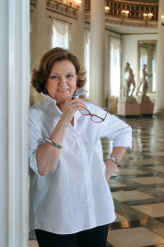 Gabriella Belli was appointed director of the Fondazione Musei Civici di Venezia as of December 2011. In 1981, she was one of the founders of the Museo d’Arte Moderna e Contemporanea di Trento e Rovereto (MART) project, of which she was director from 1981 to November 2011. She realised and coordinated the complex scientific project for the new museum, creating a structure of international standing, divided into four departments (archives and library, temporary exhibitions and permanent collection, education and PR, administration), at the centre of which was academic research and educational activities geared to permanent training. In December 2002, under her direction, the new Mart site at Rovereto was opened, designed by Mario Botta, and in 2009, with a new museographical project created by her, the restored site of the Casa d’Arte Futurista Depero reopened. In these years, she has undertaken specialised work in the field of Futurism and the historic avant-garde movements of the early 20th century, publishing essays and monographs. Since the early 1990s, she has curated many exhibitions dedicated to topics and exponents of the 19th and 20th century; the aim of these exhibitions has always been the transverse and interdisciplinary reading of subjects and themes of great interest for the study of contemporary art. From 2002 to 2011, she was President of the Associazione Nazionale dei Musei d’Arte Contemporanea Italiani (AMACI). In 2011, the French Minister for Culture rewarded her work with the Ordre des Arts et des Lettres. In the same year, she won the ICOM-Italia award for best museographer of the year
Gabriella Belli was appointed director of the Fondazione Musei Civici di Venezia as of December 2011. In 1981, she was one of the founders of the Museo d’Arte Moderna e Contemporanea di Trento e Rovereto (MART) project, of which she was director from 1981 to November 2011. She realised and coordinated the complex scientific project for the new museum, creating a structure of international standing, divided into four departments (archives and library, temporary exhibitions and permanent collection, education and PR, administration), at the centre of which was academic research and educational activities geared to permanent training. In December 2002, under her direction, the new Mart site at Rovereto was opened, designed by Mario Botta, and in 2009, with a new museographical project created by her, the restored site of the Casa d’Arte Futurista Depero reopened. In these years, she has undertaken specialised work in the field of Futurism and the historic avant-garde movements of the early 20th century, publishing essays and monographs. Since the early 1990s, she has curated many exhibitions dedicated to topics and exponents of the 19th and 20th century; the aim of these exhibitions has always been the transverse and interdisciplinary reading of subjects and themes of great interest for the study of contemporary art. From 2002 to 2011, she was President of the Associazione Nazionale dei Musei d’Arte Contemporanea Italiani (AMACI). In 2011, the French Minister for Culture rewarded her work with the Ordre des Arts et des Lettres. In the same year, she won the ICOM-Italia award for best museographer of the year
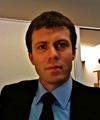 Lorenzo Casini
Lorenzo Casini
(1976) is associate professor of administrative law at the Università La Sapienza in Rome, where he has taught urban and cultural heritage law since 2002. Since 2010, he teaches Legislation on Cultural Heritage and Landscape at the IMT of Lucca. He is a Research Fellow at the Institute for International Law and Justice, New York University School of Law, and the author of about 100 texts in Italian and foreign periodicals on the subject of the public administration, cultural heritage and international organisations. He has published two books with Giuffrè: L’equilibrio degli interessi nel governo del territorio (2005) and Il diritto globale dello sport (2010), and is editor of another volume, La globalizzazione dei beni culturali (il Mulino, 2010). He is a member of the board of the Rivista trimestrale di diritto pubblico and of Aedon-Rivista di Arti e diritto on line, and is General Secretary of the Istituto di ricerche sulla pubblica amministrazione (IRPA). Since April 2012, he has been a legal advisor to the Ministry for Cultural Affairs and Tourism.
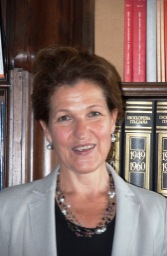 Renata Codello is a graduate in architecture from the I.U.A.V. in 1985, she gained a PhD (in 1996) and is a mamber of the Royal Institute of British Architects (RIBA – ARB). Since 2010, she has lectured at the Università di Ca’ Foscari and at the I.U.A.V. She is an expert in the work of Carlo Scarpa, and has restored a number of his works: amongst others, the Aula Manlio Capitolo in the Venetian courts, the Negozio Olivetti and the Fondazione Querini Stampalia bridge in Venice. She drafted the preliminary project and directed the works for the new headquarters of the Accademia di Belle Arti of Venice, and with Tobia Scarpa designed and then directed the works for the expansion of the recently inaugurated Gallerie dell’Accademia. The author of numerous essay and articles in specialised periodicals, she has taken part in more than 150 conferences, seminars and exhibitions and coordinated the numerous cultural events promoted by the Soprintendenza or in which it has collaborated.
Renata Codello is a graduate in architecture from the I.U.A.V. in 1985, she gained a PhD (in 1996) and is a mamber of the Royal Institute of British Architects (RIBA – ARB). Since 2010, she has lectured at the Università di Ca’ Foscari and at the I.U.A.V. She is an expert in the work of Carlo Scarpa, and has restored a number of his works: amongst others, the Aula Manlio Capitolo in the Venetian courts, the Negozio Olivetti and the Fondazione Querini Stampalia bridge in Venice. She drafted the preliminary project and directed the works for the new headquarters of the Accademia di Belle Arti of Venice, and with Tobia Scarpa designed and then directed the works for the expansion of the recently inaugurated Gallerie dell’Accademia. The author of numerous essay and articles in specialised periodicals, she has taken part in more than 150 conferences, seminars and exhibitions and coordinated the numerous cultural events promoted by the Soprintendenza or in which it has collaborated.
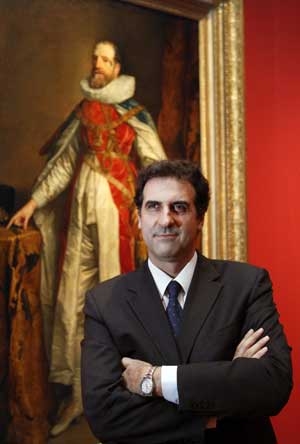 Gabriele Finaldi was born in London in 1965. After schooling in Italy and England he completed his university studies at the Courtauld Institute of Art (London University) with a doctoral dissertation on on the Spanish painter, Jusepe de Ribera (1591-1652). He was appointed Curator of Later Italian and Spanish Painting at the National Gallery, London, in 1992. In 2002 he was appointed Deputy Director for Collections and Research at the Museo del Prado in Madrid and has overseen the opening of the new extension in 2007, designed by architect Rafael Moneo, as well as an ambitious programme of exhibitions and acquisitions. He has published on Italian and Spanish painting of the seventeenth and eighteenth centuries, and has continued to curate exhibitions.
Gabriele Finaldi was born in London in 1965. After schooling in Italy and England he completed his university studies at the Courtauld Institute of Art (London University) with a doctoral dissertation on on the Spanish painter, Jusepe de Ribera (1591-1652). He was appointed Curator of Later Italian and Spanish Painting at the National Gallery, London, in 1992. In 2002 he was appointed Deputy Director for Collections and Research at the Museo del Prado in Madrid and has overseen the opening of the new extension in 2007, designed by architect Rafael Moneo, as well as an ambitious programme of exhibitions and acquisitions. He has published on Italian and Spanish painting of the seventeenth and eighteenth centuries, and has continued to curate exhibitions.
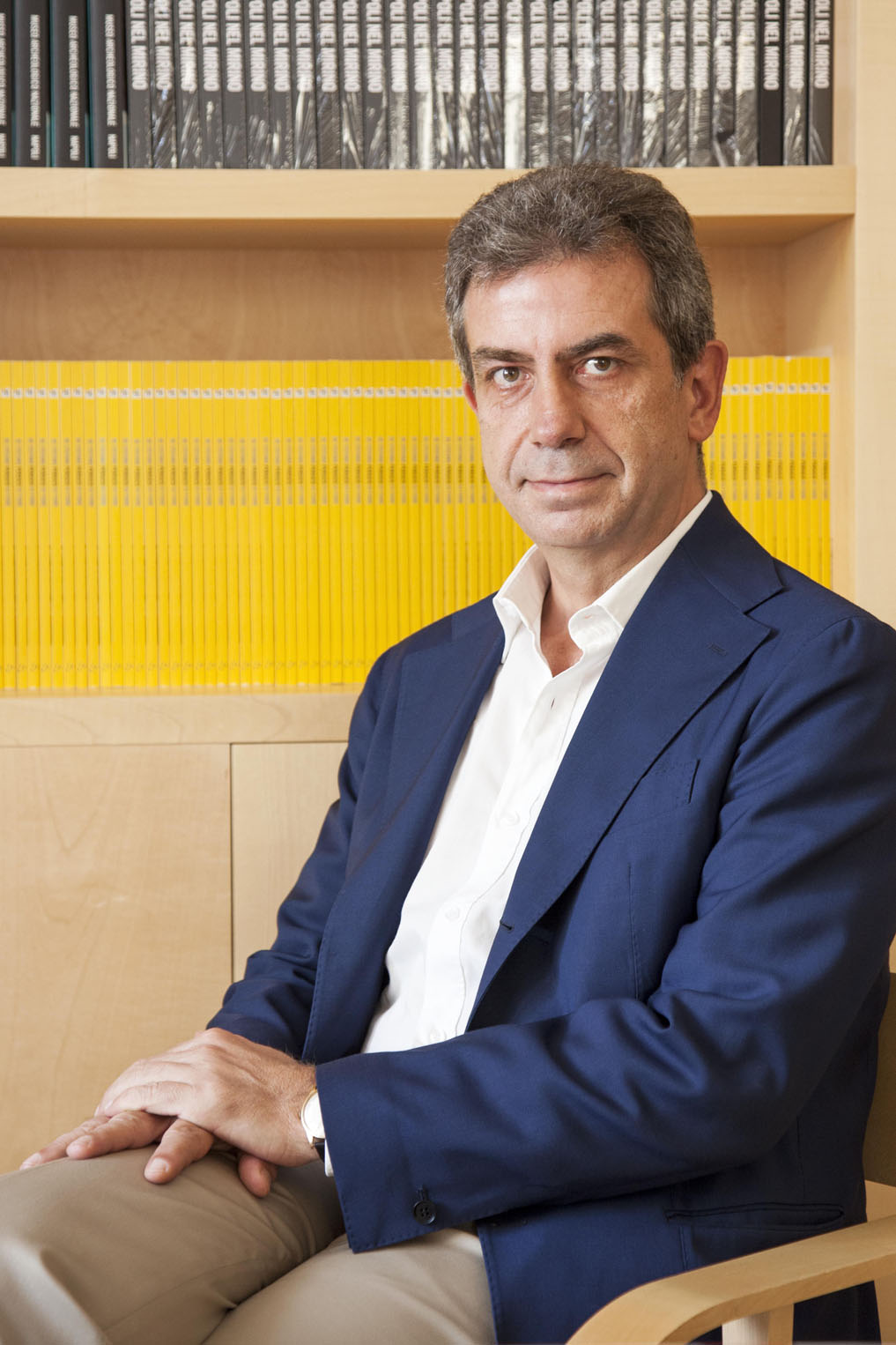 Pierpaolo Forte is Associate professor of administrative law, He teaches at the Università degli studi del Sannio di Benevento. He has written approximately 50 academic publications and, among other posts, has held that of legal advisor to the Minister for cultural affairs, expert to the Prime Minister’s Office, a member of the Regional Conference for calls for tenders and concessions in the Campania Region, a member of the xcademic committee of the Consorzio interuniversitario ALMALAUREA and a member of the technical committee of the Consorzio interuniversitario CINECA, a member of the board of the Fondazione Maggio musicale fiorentino in Florence, of the Fondazione C.I.V.E.S., which runs the Museo Archeologico Virtuale (MAV) at Ercolano, and of the Fondazione Antonio Morra Greco in Naples. He is currently Chairman of the Fondazione Donnaregina per le arti contemporanee which administers the Museo Madre in Naples, and a member of the board of Federculture and of Ravello Lab – Colloqui Internazionali.
Pierpaolo Forte is Associate professor of administrative law, He teaches at the Università degli studi del Sannio di Benevento. He has written approximately 50 academic publications and, among other posts, has held that of legal advisor to the Minister for cultural affairs, expert to the Prime Minister’s Office, a member of the Regional Conference for calls for tenders and concessions in the Campania Region, a member of the xcademic committee of the Consorzio interuniversitario ALMALAUREA and a member of the technical committee of the Consorzio interuniversitario CINECA, a member of the board of the Fondazione Maggio musicale fiorentino in Florence, of the Fondazione C.I.V.E.S., which runs the Museo Archeologico Virtuale (MAV) at Ercolano, and of the Fondazione Antonio Morra Greco in Naples. He is currently Chairman of the Fondazione Donnaregina per le arti contemporanee which administers the Museo Madre in Naples, and a member of the board of Federculture and of Ravello Lab – Colloqui Internazionali.
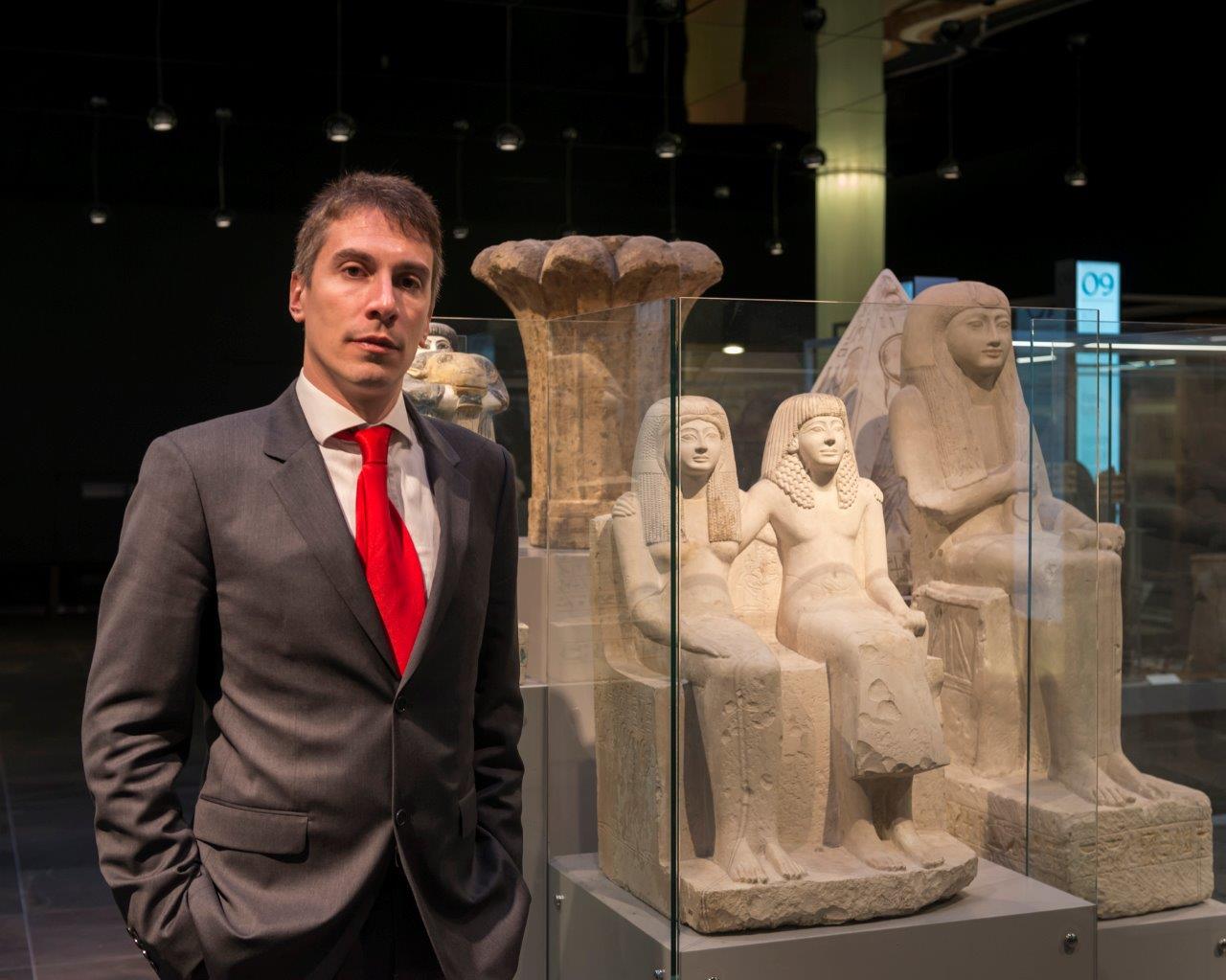 Christian Greco was born in 1975 at Arzignano (VI), He is an Egyptologist, university lecturer in courses of Egyptian Archaeology and Archaeology of Nubia and Sudan at the University of Leiden, the finest Egyptology centre in the Netherlands, and curator of one of the most important Egyptian collections in Europe, that of the Dutch National Museum of Antiquities in Leiden. He has curated many exhibitions and curatorship projects in the Netherlands, but also in Japan, Finland and Spain, and has developed important international collaborations, both as a member of a research group and with other museums, including the Vatican Museums and the Louvre. He was a member of the American epigraphic mission in Luxor and has for some years been co-director of the Dutch archaeological mission at Saqqara. He has published both general interest and academic books in various languages (Italian, French, English, Dutch and Spanish). On top of his highly specialised scientific and professional profile, Dr Greco has gained great technical and administrative skills, developed at the Dutch National Museum of Antiquities where, since 2009, he has been curator of the Egyptian collection. Since June 17th 2014, he has been a member of the MIBACT technical-scientific committee for archaeological heritage. Since February 2014, he has been director of the Fondazione Museo delle Antichità Egizie in Turin.
Christian Greco was born in 1975 at Arzignano (VI), He is an Egyptologist, university lecturer in courses of Egyptian Archaeology and Archaeology of Nubia and Sudan at the University of Leiden, the finest Egyptology centre in the Netherlands, and curator of one of the most important Egyptian collections in Europe, that of the Dutch National Museum of Antiquities in Leiden. He has curated many exhibitions and curatorship projects in the Netherlands, but also in Japan, Finland and Spain, and has developed important international collaborations, both as a member of a research group and with other museums, including the Vatican Museums and the Louvre. He was a member of the American epigraphic mission in Luxor and has for some years been co-director of the Dutch archaeological mission at Saqqara. He has published both general interest and academic books in various languages (Italian, French, English, Dutch and Spanish). On top of his highly specialised scientific and professional profile, Dr Greco has gained great technical and administrative skills, developed at the Dutch National Museum of Antiquities where, since 2009, he has been curator of the Egyptian collection. Since June 17th 2014, he has been a member of the MIBACT technical-scientific committee for archaeological heritage. Since February 2014, he has been director of the Fondazione Museo delle Antichità Egizie in Turin.
 Walter Hartsarich, graduated in Statistical Sciences and Economics with a thesis on marketing. He began his professional career in Quaker Chiari e Forti as Assistente Product Manager for Cuore. After gaining experience here, he moved to Milan and worked as Media Director at ODG, where he worked for major clients like ENI (Agip, IP) and Johnson & Johnson. In 1982, he opened one of the first media centres in Italy: Punto Media. In 1984, he founded Medianetwork, of which he is managing director. In 1988, he opened a new media centre, Spazio Media, with offices in Milan and Padua, and is its Chairman and Sole Administrator. In 1992, he merged Spazio Media with Carat Italia, where he first expanded the already existing sites and then opened in Bologna, Florence and Padua, dealing with the new business himself. Since 1998, he has been Chief Executive Officer of Aegis Media Italia, a part of the Aegis Group quoted on the London Stock Exchange, and from June 2000 to December 2009 was also its Chairman. Since 2010, he has been Honorary Chairman of Aegis Media Italia and a member of the board of Aegis Media Iberia for Latin American countries. Since December 2010, he is the President of the Civic Museums Foundation of Venice.
Walter Hartsarich, graduated in Statistical Sciences and Economics with a thesis on marketing. He began his professional career in Quaker Chiari e Forti as Assistente Product Manager for Cuore. After gaining experience here, he moved to Milan and worked as Media Director at ODG, where he worked for major clients like ENI (Agip, IP) and Johnson & Johnson. In 1982, he opened one of the first media centres in Italy: Punto Media. In 1984, he founded Medianetwork, of which he is managing director. In 1988, he opened a new media centre, Spazio Media, with offices in Milan and Padua, and is its Chairman and Sole Administrator. In 1992, he merged Spazio Media with Carat Italia, where he first expanded the already existing sites and then opened in Bologna, Florence and Padua, dealing with the new business himself. Since 1998, he has been Chief Executive Officer of Aegis Media Italia, a part of the Aegis Group quoted on the London Stock Exchange, and from June 2000 to December 2009 was also its Chairman. Since 2010, he has been Honorary Chairman of Aegis Media Italia and a member of the board of Aegis Media Iberia for Latin American countries. Since December 2010, he is the President of the Civic Museums Foundation of Venice.
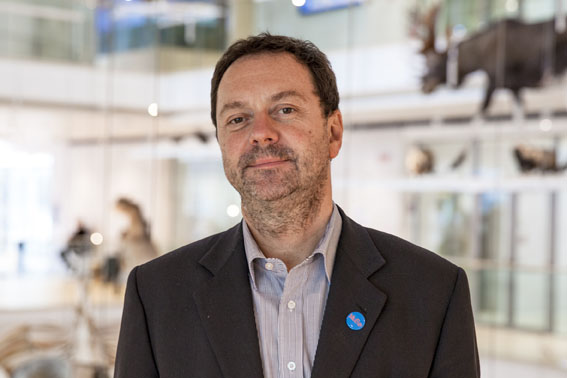 Michele Lanzinger graduated in Geological Sciences and had a research fellowship in Anthropological Sciences, developing research into the early population of the Alps during the Ice Age and late Ice Age. Since 1988, he has been curator and since 1992 director of the Museo Tridentino di Scienze Naturali, now the Muse Museo delle Scienze. He has been chairman of the ANMS Ass. Naz. Musei Scientifici, a member of the ICOM Italy board and of the board of ECSITE, the network of European science centres. Under his direction, the number of operators increased from 24 to 207 individuals (tpe/2014). He promotes the development of educational programmes (130,000 users in 2013), events and important temporary exhibitions, together with a network of satellite museums around the Trentino region, and including a research, cooperation and development in Tanzania. The museum is a MIUR accredited research institution and has about 50 equivalent full-time researchers. The museum has communications and corporate membership structures. As manager for the project for the new science museum to be built as part of the urban development of the city of Trento, he dealt with all the phases of design and construction in contact with the Renzo Piano Building Workshop. In its first year of activity, the Muse had a total of 548,000 visitors, or 630,000 including the territorial sites.
Michele Lanzinger graduated in Geological Sciences and had a research fellowship in Anthropological Sciences, developing research into the early population of the Alps during the Ice Age and late Ice Age. Since 1988, he has been curator and since 1992 director of the Museo Tridentino di Scienze Naturali, now the Muse Museo delle Scienze. He has been chairman of the ANMS Ass. Naz. Musei Scientifici, a member of the ICOM Italy board and of the board of ECSITE, the network of European science centres. Under his direction, the number of operators increased from 24 to 207 individuals (tpe/2014). He promotes the development of educational programmes (130,000 users in 2013), events and important temporary exhibitions, together with a network of satellite museums around the Trentino region, and including a research, cooperation and development in Tanzania. The museum is a MIUR accredited research institution and has about 50 equivalent full-time researchers. The museum has communications and corporate membership structures. As manager for the project for the new science museum to be built as part of the urban development of the city of Trento, he dealt with all the phases of design and construction in contact with the Renzo Piano Building Workshop. In its first year of activity, the Muse had a total of 548,000 visitors, or 630,000 including the territorial sites.
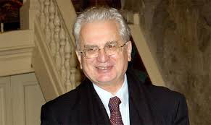 Mikhail Borisovich Piotrovsky was born in Yerevan, Armenia, in 1944. His father, Boris Borisovich Piotrovski, an eminent archaeologist was director of The State Hermitage Museum from 1964 to 1990. In 1996 Mikhail Piotrovsky graduated with honours from the Oriental Faculty of Leningrad State University, specializing in Arabic Studies, in 1967. He also attended Cairo University from 1965 to 1966. He entered the Leningrad branch of the Institute for Oriental Studies as a research assistant in1967 and worked there until 1991. In 1991 he was invited to join the Hermitage staff as first deputy director with responsibility for research work. In July 1992 Mikhail Piotrovsky was appointed Director of the State Hermitage by government decree. Dr. Piotrovsky has taken part in archaeological excavations in the Caucasus, Central Asia and Yemen. He is the author of more than 200 scholarly works, including catalogues of Arabic manuscripts, the publication of mediaeval works and ancient inscriptions, works on the spiritual and political history of Islam and Arab culture, and on the archaeology of Arabia. His publications include a set of entries on Muslim mythology in the encyclopedia Myths of the Peoples of the World, a series of articles about the prophet Muhammad and the monographs: The Legend of the Himyarite King Asad al-Kamil (Moscow, 1977; Arabic translations: Sanaa, Damascus, Aden, 1978, 1979); Southern Arabia in the Early Middle Ages (Moscow, 1985); Yemen before Islam and in the First Century of the Hijra (Beirut, 1987); Koranic Tales (Moscow, 1991); Islam. An Encyclopedic Reference Book (Moscow, 1991, co-author); The Hermitage. Collections and Collectors (St Petersburg, 1997); Earthly Art – Heavenly Beauty. The Art of Islam (St Petersburg, 2000); On Islamic Art (St Petersburg, 2001), The Hermitage in the Great Museums of the World series (Slovo, Moscow, 2003), The Historical Legends of Quran. A Word and an Image (St Petersburg, 2005). Dr. Mikhail Piotrovsky is a member of the Russian Academy of Sciences, a full member of the Russian Academy of Arts, and a corresponding member of the German Archaeological Institute, deputy chairman of the President’s Council for Art and Culture, a professor of St. Petersburg State University, chairman of the Union of Museums in Russia, president of the Worldwide Club of St. Petersburgers, chairman of the board of the European University in St Petersburg, editor-in-chief of the magazine The Christian Orient. He has been awarded the Netherlands Order of Orange-Nassau (1996), the Russian Order of Honour (1997), the French Order of the Legion of Honour (1998, 2004), the Swedish Order of the Polar Star (1999), the Order for Merit to the Italian Republic (2000, 2004), the Armenian Apostolic Church’s Order of St Mesrop (2000), the Ukrainian Order of Yaroslav the Wise (2003), the Order “Of Service” (Poland, 2004), the Order of Service to the Fatherland (Russia, 2004), the Award of the Council’s of Muftis of Russia – the Al-Fahr Order of Honour (2005),), Order of the Finish Lion (2005), the International Prize of St. Andrew “for Faith and Loyalty” (2005), the Order of Rising Sun, Gold and Silver Star (Japan, 2007). In 2003 Mikhail Piotrovsky has been awarded the President Prize in the Field of Art and Literature. In 1997 a minor planet was named “Piotrovsky” by the International Astronomical Union in joint honour of Mikhail Borisovich Piotrovsky and his father Boris Borisovich Piotrovsky.
Mikhail Borisovich Piotrovsky was born in Yerevan, Armenia, in 1944. His father, Boris Borisovich Piotrovski, an eminent archaeologist was director of The State Hermitage Museum from 1964 to 1990. In 1996 Mikhail Piotrovsky graduated with honours from the Oriental Faculty of Leningrad State University, specializing in Arabic Studies, in 1967. He also attended Cairo University from 1965 to 1966. He entered the Leningrad branch of the Institute for Oriental Studies as a research assistant in1967 and worked there until 1991. In 1991 he was invited to join the Hermitage staff as first deputy director with responsibility for research work. In July 1992 Mikhail Piotrovsky was appointed Director of the State Hermitage by government decree. Dr. Piotrovsky has taken part in archaeological excavations in the Caucasus, Central Asia and Yemen. He is the author of more than 200 scholarly works, including catalogues of Arabic manuscripts, the publication of mediaeval works and ancient inscriptions, works on the spiritual and political history of Islam and Arab culture, and on the archaeology of Arabia. His publications include a set of entries on Muslim mythology in the encyclopedia Myths of the Peoples of the World, a series of articles about the prophet Muhammad and the monographs: The Legend of the Himyarite King Asad al-Kamil (Moscow, 1977; Arabic translations: Sanaa, Damascus, Aden, 1978, 1979); Southern Arabia in the Early Middle Ages (Moscow, 1985); Yemen before Islam and in the First Century of the Hijra (Beirut, 1987); Koranic Tales (Moscow, 1991); Islam. An Encyclopedic Reference Book (Moscow, 1991, co-author); The Hermitage. Collections and Collectors (St Petersburg, 1997); Earthly Art – Heavenly Beauty. The Art of Islam (St Petersburg, 2000); On Islamic Art (St Petersburg, 2001), The Hermitage in the Great Museums of the World series (Slovo, Moscow, 2003), The Historical Legends of Quran. A Word and an Image (St Petersburg, 2005). Dr. Mikhail Piotrovsky is a member of the Russian Academy of Sciences, a full member of the Russian Academy of Arts, and a corresponding member of the German Archaeological Institute, deputy chairman of the President’s Council for Art and Culture, a professor of St. Petersburg State University, chairman of the Union of Museums in Russia, president of the Worldwide Club of St. Petersburgers, chairman of the board of the European University in St Petersburg, editor-in-chief of the magazine The Christian Orient. He has been awarded the Netherlands Order of Orange-Nassau (1996), the Russian Order of Honour (1997), the French Order of the Legion of Honour (1998, 2004), the Swedish Order of the Polar Star (1999), the Order for Merit to the Italian Republic (2000, 2004), the Armenian Apostolic Church’s Order of St Mesrop (2000), the Ukrainian Order of Yaroslav the Wise (2003), the Order “Of Service” (Poland, 2004), the Order of Service to the Fatherland (Russia, 2004), the Award of the Council’s of Muftis of Russia – the Al-Fahr Order of Honour (2005),), Order of the Finish Lion (2005), the International Prize of St. Andrew “for Faith and Loyalty” (2005), the Order of Rising Sun, Gold and Silver Star (Japan, 2007). In 2003 Mikhail Piotrovsky has been awarded the President Prize in the Field of Art and Literature. In 1997 a minor planet was named “Piotrovsky” by the International Astronomical Union in joint honour of Mikhail Borisovich Piotrovsky and his father Boris Borisovich Piotrovsky.
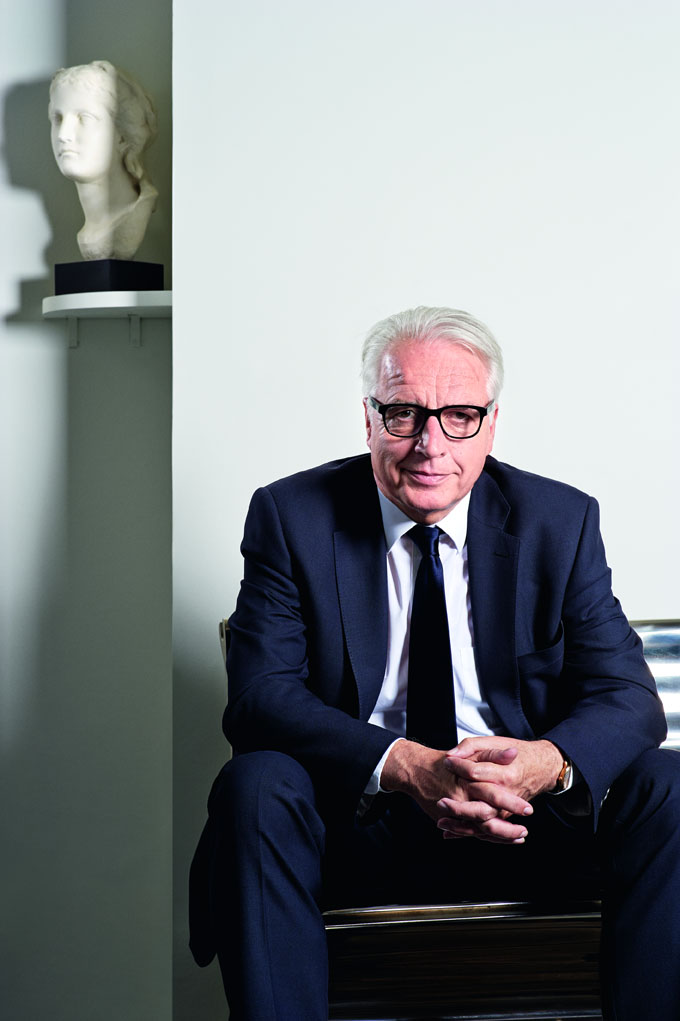 Martin Roth became Director of the Victoria and Albert Museum in September 2011. Before joining the V&A, Martin Roth was Director General of the Staatliche Kunstsammlungen Dresden, overseeing 12 museums and galleries. During this time he created an extensive network of international partners, which led to numerous exhibitions overseas. From 1996-2001 Martin Roth was a member of the senior management of the Expo 2000 in Hanover and Director of Thematic Exhibitions. Martin Roth is a Trustee of the British Council and of the Musée des Arts Decoratifs in Paris. He is a member of both the Council of the Royal College of Art and the Court of Imperial College in London.
Martin Roth became Director of the Victoria and Albert Museum in September 2011. Before joining the V&A, Martin Roth was Director General of the Staatliche Kunstsammlungen Dresden, overseeing 12 museums and galleries. During this time he created an extensive network of international partners, which led to numerous exhibitions overseas. From 1996-2001 Martin Roth was a member of the senior management of the Expo 2000 in Hanover and Director of Thematic Exhibitions. Martin Roth is a Trustee of the British Council and of the Musée des Arts Decoratifs in Paris. He is a member of both the Council of the Royal College of Art and the Court of Imperial College in London.
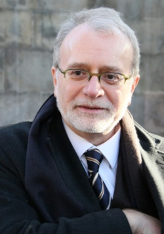 Ugo Soragni was born in Vicenza in 1953, he graduated from the Università di Roma “La Sapienza” in 1977 with the highest marks and honours, in the same year being registered to practise. Holding posts in the state administration of the cultural heritage from 1980, he has since 2000 been Soprintendente for the environmental and architectural heritage of the Marches, since 2011 Soprintendente regionale for the cultural heritage and activities of Puglia, from 2004 to 2007 Regional director for the cultural and natural heritage of Friuli Venezia Giulia, and then Regional director for the cultural and natural heritage of the Veneto. A lecturer at the Politecnico di Brescia and the Università degli studi di Trieste, he has published numerous works in the fields of architecture and urban planning. He has directed many restoration sites in the Veneto and in the Marches, and drafted and signed the memorandum of understanding for the reconstruction of the Teatro Petruzzelli in Bari.
Ugo Soragni was born in Vicenza in 1953, he graduated from the Università di Roma “La Sapienza” in 1977 with the highest marks and honours, in the same year being registered to practise. Holding posts in the state administration of the cultural heritage from 1980, he has since 2000 been Soprintendente for the environmental and architectural heritage of the Marches, since 2011 Soprintendente regionale for the cultural heritage and activities of Puglia, from 2004 to 2007 Regional director for the cultural and natural heritage of Friuli Venezia Giulia, and then Regional director for the cultural and natural heritage of the Veneto. A lecturer at the Politecnico di Brescia and the Università degli studi di Trieste, he has published numerous works in the fields of architecture and urban planning. He has directed many restoration sites in the Veneto and in the Marches, and drafted and signed the memorandum of understanding for the reconstruction of the Teatro Petruzzelli in Bari.
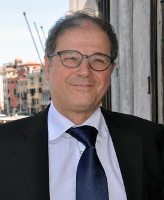 Vittorio Zappalorto after gaining a high school diploma in classical studies from the Collegio Vescovile S. Pio X in Treviso, he graduated in Jurisprudence from the Università degli Studi di Bologna with a thesis on international law. His career began in Trieste, where he worked in the Cabinet Office on problems associated with linguistic minorities. In Trieste, he was also Sub Commissario Straordinario at the Comune di Muggia and Commissario at Acta in a complex legal affair resulting from the 1976 earthquake. In 1991, he moved to Rome, where he worked in the Civil Services Office of the Ministry of the Interior, joining the Crisis Unit put together in response to the landing of Albanian citizens on the coasts of Puglia from 1991 to 1992. In 1992, he became a member of the commission for the liquidation of abandoned property abroad at the Treasury. In 1994, he was called to the Quirinale by President Scalfaro as Referendario in the Internal Affairs Office of the General Secretariat of the Presidency. At the Quirinale, he worked principally on the organisation of presidential visits, contacts with the security services and constitutional bodies. In 1998, he returned to the Viminale where he worked for a long period at the Central Office for Parliamentary Relations and Legislative Affairs. His work in the Legislative Office concerned institutional reforms with particular focus on the reform of Title 5 of the Constitution and the Reform of the Single Text for Local Authorities. In 1999, he was nominated Sub Commissario at the Comune di Macerata. In 2002, he was promoted to the post of Deputy Prefect. Both final works in the training course have been published. In 2004, he was nominated Director of the Secretariat of the “Comitato Vari” commissioned by Minister Pisanu to draw up an organic reform of the Organisation of Local Authorities. From September 2008, he was nominated Commissary of the Treviso Prefecture. Since January 20 2010 he has held the post of Chief of Cabinet at the Milan Prefecture and then that of Vice Prefetto Vicario. From 2011 to January 2013 he was also Implementing Body for the North African emergency for Lombardy. In Milan, he was given the role of Extraordinary Commissioner for the Comune di Cassano d’Adda and Comune di Lodi and various similar roles at Acta. From July to August 2013, he was vice-prefect in the empty seat of Milan. From September 17 2013 he was Extraordinary Commissioner in the Comune di Marigliano (NA), where he remained until December 30th 2013, when he was nominated Prefect of Gorizia. From July 3rd 2014, he was nominated Extraordinary Commissioner for the Comune di Venezia.
Vittorio Zappalorto after gaining a high school diploma in classical studies from the Collegio Vescovile S. Pio X in Treviso, he graduated in Jurisprudence from the Università degli Studi di Bologna with a thesis on international law. His career began in Trieste, where he worked in the Cabinet Office on problems associated with linguistic minorities. In Trieste, he was also Sub Commissario Straordinario at the Comune di Muggia and Commissario at Acta in a complex legal affair resulting from the 1976 earthquake. In 1991, he moved to Rome, where he worked in the Civil Services Office of the Ministry of the Interior, joining the Crisis Unit put together in response to the landing of Albanian citizens on the coasts of Puglia from 1991 to 1992. In 1992, he became a member of the commission for the liquidation of abandoned property abroad at the Treasury. In 1994, he was called to the Quirinale by President Scalfaro as Referendario in the Internal Affairs Office of the General Secretariat of the Presidency. At the Quirinale, he worked principally on the organisation of presidential visits, contacts with the security services and constitutional bodies. In 1998, he returned to the Viminale where he worked for a long period at the Central Office for Parliamentary Relations and Legislative Affairs. His work in the Legislative Office concerned institutional reforms with particular focus on the reform of Title 5 of the Constitution and the Reform of the Single Text for Local Authorities. In 1999, he was nominated Sub Commissario at the Comune di Macerata. In 2002, he was promoted to the post of Deputy Prefect. Both final works in the training course have been published. In 2004, he was nominated Director of the Secretariat of the “Comitato Vari” commissioned by Minister Pisanu to draw up an organic reform of the Organisation of Local Authorities. From September 2008, he was nominated Commissary of the Treviso Prefecture. Since January 20 2010 he has held the post of Chief of Cabinet at the Milan Prefecture and then that of Vice Prefetto Vicario. From 2011 to January 2013 he was also Implementing Body for the North African emergency for Lombardy. In Milan, he was given the role of Extraordinary Commissioner for the Comune di Cassano d’Adda and Comune di Lodi and various similar roles at Acta. From July to August 2013, he was vice-prefect in the empty seat of Milan. From September 17 2013 he was Extraordinary Commissioner in the Comune di Marigliano (NA), where he remained until December 30th 2013, when he was nominated Prefect of Gorizia. From July 3rd 2014, he was nominated Extraordinary Commissioner for the Comune di Venezia.